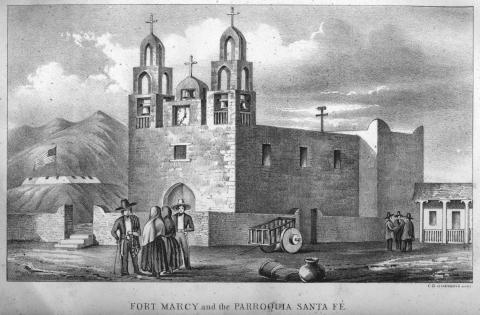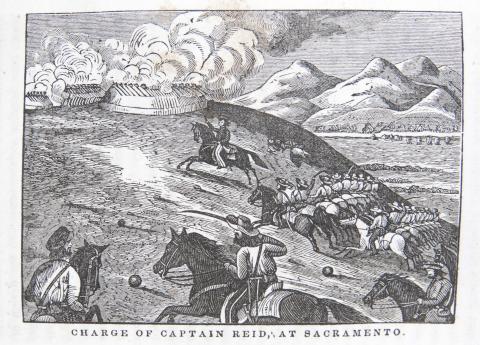Although the U.S.-Mexico War was fought primarily below the Rio Grande, Mexico’s northernmost departments, New Mexico and California, had always been viewed as the Polk administration’s principal territorial objectives in the event of war. Accordingly, the military strategy which quickly took shape in Washington involved a three-pronged attack against Mexico. In addition to a campaign against Mexican cities and towns below the Rio Grande by Zachary Taylor’s Army of Occupation, the plan required seizing Santa Fe, the linchpin of Mexican trade in the northern borderlands, and strategic points along the California coast.
In June, 1846, Colonel Stephen Watts Kearny led 2,500 men out of Fort Leavenworth, Kansas on an 850- mile trek to Santa Fe, New Mexico. Two months the “Army of the West” reached its destination. Although Governor Manuel Armijo exhorted residents of the province to repel the invasion, he fled to Chihuahua as Kearney’s force approached, allowing U.S. troops to take the town without resistance in mid-August. Establishing a civil government in New Mexico, Kearny took a small part of his force and continued his march to California.
Meanwhile, on the Pacific coast, Commodore John D. Sloat, commander of the Pacific squadron, having already received orders to seize Mexican ports in California in the event of war, occupied Monterrey and San Francisco in early July. The U.S. Navy’s seizure of Mexican towns on the coast was aided by John C. Frémont and Anglo-American settlers in northern California (the so-called Bear Flag Revolt).
Although U.S. forces easily established control over New Mexico and California, resistance to U.S. occupation flared in both areas in January, 1847. By the spring, however, U.S. troops had managed to reassert their authority over both areas.







